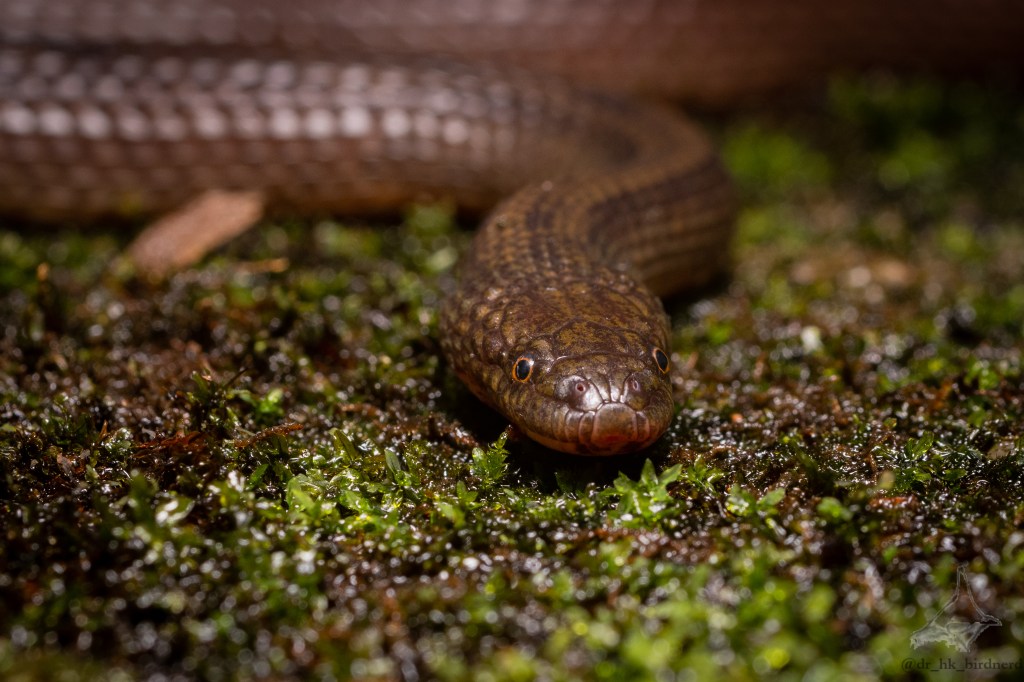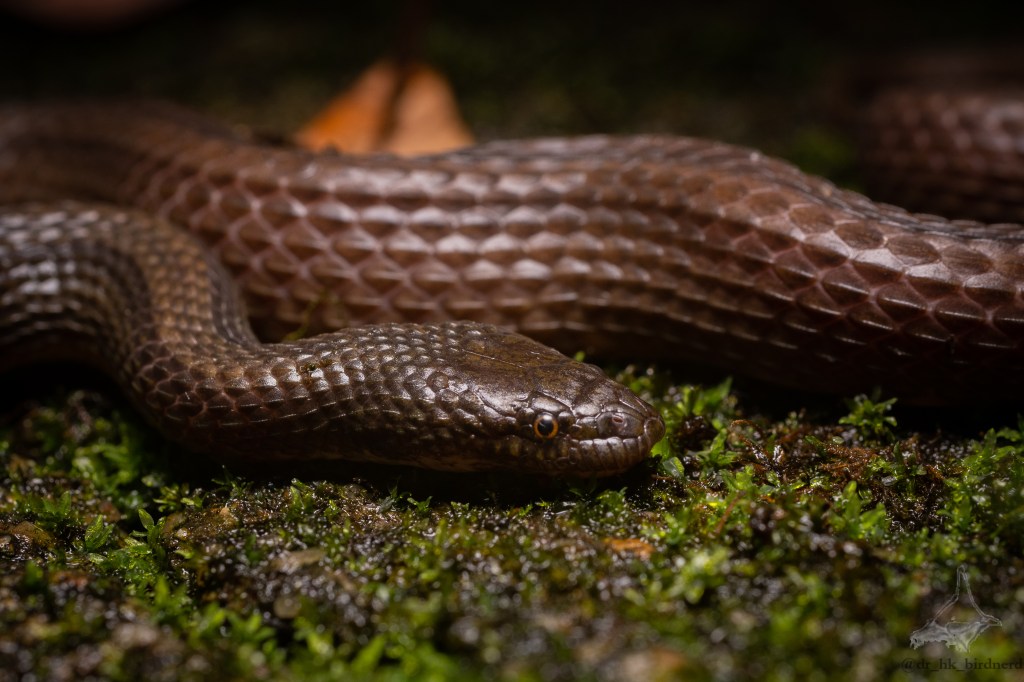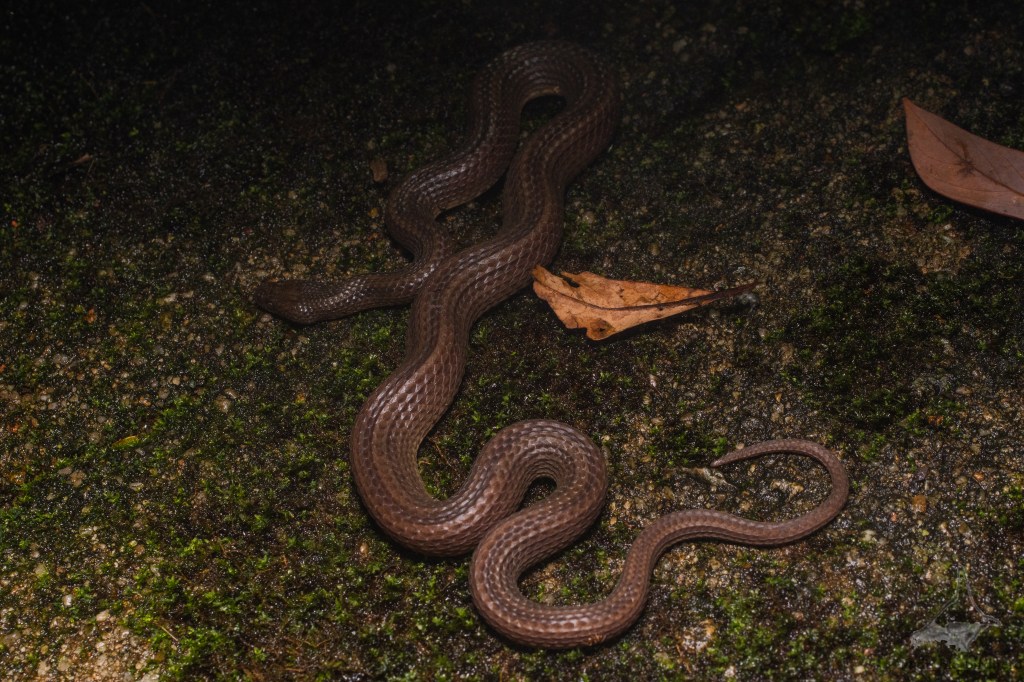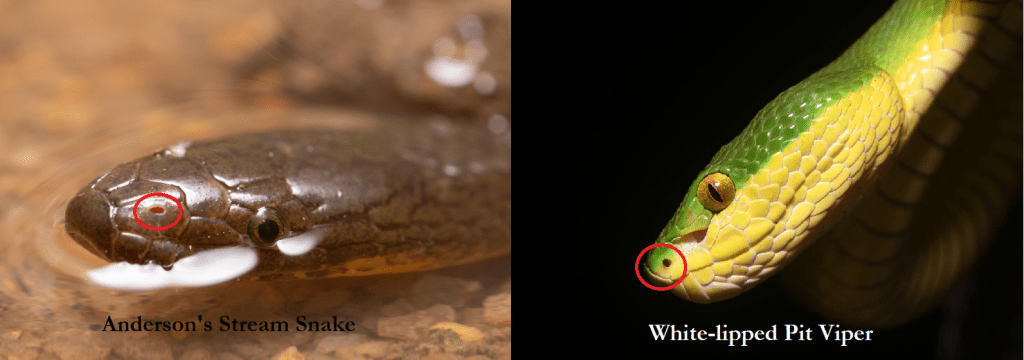
The striped stream snake (opisthotropis kuatunensis) is a species of snake belonging to the genus opisthotropis, all of whose species are endemic to Southeast Asia. Confusingly, this species is also sometimes called the “Chinese mountain keelback,” not to be confused with the elusive and also Hong Kong local “mountain keelback.” It is found in Fujian, Zhejiang, Jiangxi, Guangxi, Hong Kong, and, I would imagine, Guangdong. It is not a threatened species at the moment.

Little is known about this snake, as it is not very well studied, but a fair amount can be inferred based on its habitat and physical features. It thrives in mountain streams as a predator feeding on freshwater shrimp, fish, tadpoles, and other soft bodied prey. One has even been recorded attempting to eat a freshwater crab in Hong Kong, though it must have been one that had just molted, as the snake would likely be unable to eat a crab with its hard shell intact. It’s possible, however, that freshly-molted crabs may be an important part of their diet due to the regularity with which crabs tend to molt. Further, other snakes are known to eat crabs larger than their head by picking off the legs one-by-one and leaving the rest of the parts that are too big to swallow. It would be very interesting to come across an interaction between a striped stream snake and a crab, though the chances of seeing one I suppose are very low.

Concerning its physical appearance, its scales are heavily keeled all along the back, meaning that they have a ridge that sticks out from the middle of each scale. The evolutionary purpose of keeled scales is not fully understood, but the main effect is on the snakes overall appearance, with keeled scales making the snake rather dull looking, and smooth scales making it appear more shiny. Not all stream snakes have keeled scales (Anderson’s stream snake does not, for example), and in fact this is the only keeled species of opisthotropis in Hong Kong, so I’m not quite sure if the keeled scales give this stream snake an evolutionary advantage.

Like other stream snakes, its nostrils have evolved to be positioned higher on the nose than on their land dwelling counterparts, no doubt in order to help it breathe more easily when the rest of its body is submerged, such as in the example photo of Anderson’s stream snake below.

This positioning of the nostrils is actually a fascinating example of convergent evolution, as the gradual upward relocation of the nostrils (or nostril) in cetaceans, eventually becoming what we now know as the blowhole, was the result of similar evolutionary pressures stemming from an increasingly aquatic lifestyle.

